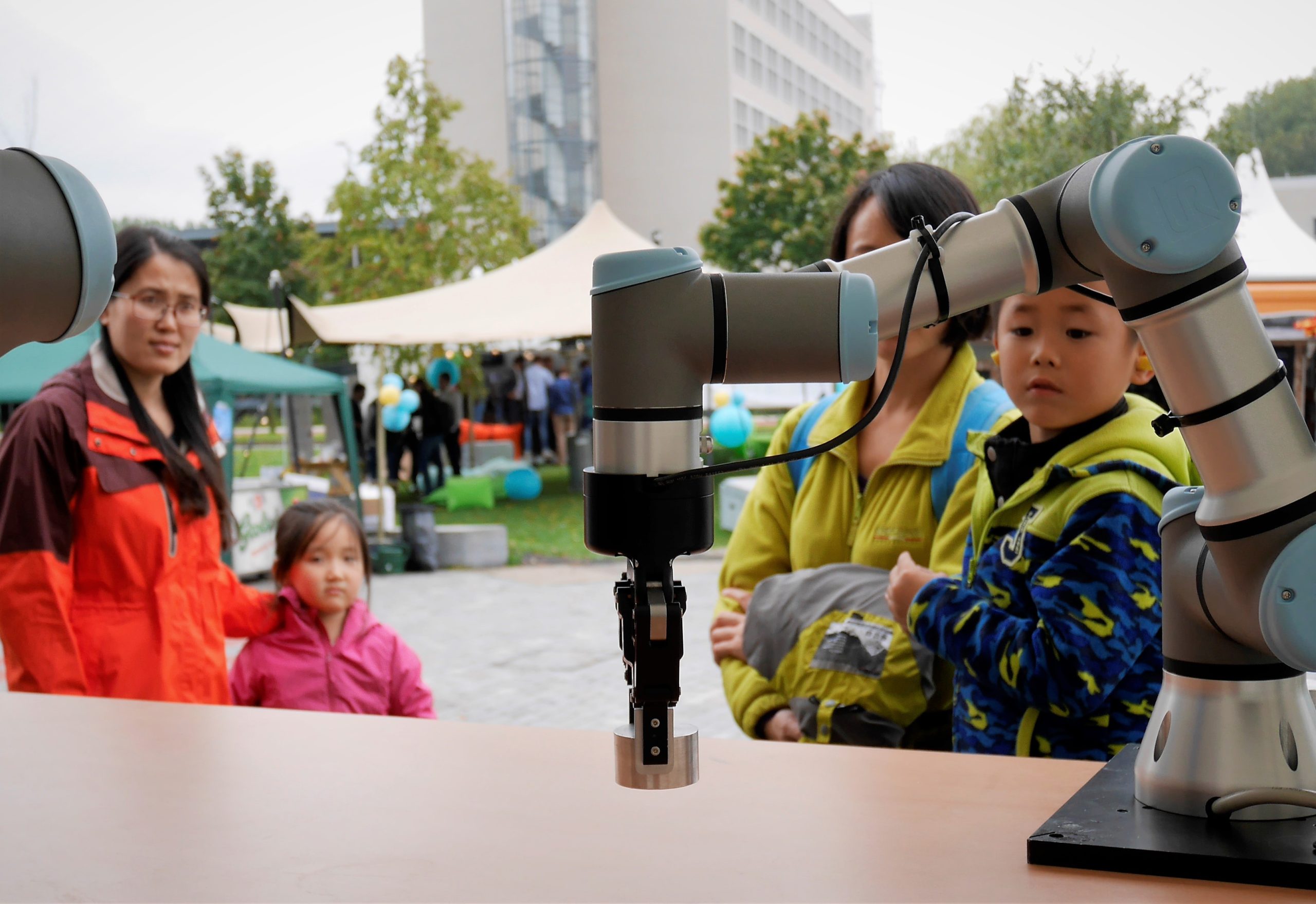TU Delft wants to attract more Dutch students from migrant backgrounds, but CBS research shows that it it is not doing badly. What can still be improved?
If you want young people to choose a technical profile at secondary school, it is good to spark their interest at an early age. (Photo: Roos van Tongeren)
To enhance diversity within its walls and achieve its growth target, TU Delft hopes to attract more first generation Dutch students. In doing so, TU Delft is targetting potential students from migrant families. These could be young people from certain neighbourhoods in Rotterdam-Zuid, for example. “We hardly see any students from there,” said David Keyson, TU Delft Diversity Officer, in 2021 in an interview with Delta.
In the meantime, TU Delft has requested Statistics Netherlands (CBS) to assess the situation of the population of students from migrant backgrounds on campus (and their pass rates, but the CBS cannot draw firm conclusions about this). The findings (in Dutch) were available in August 2022, but did not reach Delta before now.
The CBS compared the inflow of bachelor students between 2012 and 2021. This revealed the following information.
- Students with roots in Indonesia, Morocco, the Dutch Caribbean region, Suriname, and Turkey each accounted for between 1% and 2% of the inflow of bachelor students.
- This meant that between 20 and 70 students from each country of origin entered TU Delft.
- According to the CBS, this is in line with ‘the proportions of higher secondary education N&T (nature and technology, Eds.) diploma holders’.
In other words, the conclusion is that school pupils with migrant backgrounds who are technical choose TU Delft just as often as you would expect in relation to the size of the group. So TU Delft does not do that badly at all.
Postal code policy
While Keyson recognises this, he is still not satisfied. He believes that children in general should choose more technical subjects (+) and there is still some catching up to do in terms of children with migrant backgrounds. In that case, the question now is then how this can be done?
An interview from the past shows that Keyson had a plan in 2021. He believed that TU Delft should visit schools and he had an answer to the question of which schools. Heat maps of neighbourhoods should show the origins of students as, Keyson said, ‘minority groups often live in certain neighbourhoods and few of our students come from these neighbourhoods’. It would give TU Delft the opportunity to carry out targetted campaigns at primary and secondary schools to get children interested in technology and develop a technical profile.
However, that desired postal code policy has not yet come, Keyson now tells Delta. The data about postal codes, origins and choices of schools do not seem to match well enough. Secondary schools that ‘supply’ a lot of students to TU Delft seem to attract young people from the whole city. This undoubtedly is the same for secondary schools that supply few students. This is not that useful if you do not know where these pupils live, especially if you want to reach them when they are still open to your message while at primary school (which are often in a different neighbourhood than the secondary school).
Erasmus University
While there may be no heat maps, Keyson still maintains that TU Delft should visit schools. His colleagues are now working on an outreach programme that should clarify how the schools will be selected.
In doing so, the Diversity Office is looking at a similar programme by Erasmus University Rotterdam (EUR). Anne Wijtzes, the EUR Programme Manager, confirms that their Academic Outreach Programme indeeds works with ‘specially selected schools to ensure that our efforts are made where they can have the biggest impact’.
Erasmus University uses CBS scores on the degree of disadvantage to select primary schools in Rotterdam. This is done somewhat differently for the secondary schools in Rotterdam. Wijtzes explains. “As we first target higher secondary school pupils, we designed an indicator that shows the background features of the pupils at secondary schools. We opted for the percentage of higher secondary school pupils from disadvantaged areas as an indicator. We then started with the schools that had children and young people with the lowest levels of opportunity.”
Do you have a question or comment about this article?
s.m.bonger@tudelft.nl


Comments are closed.